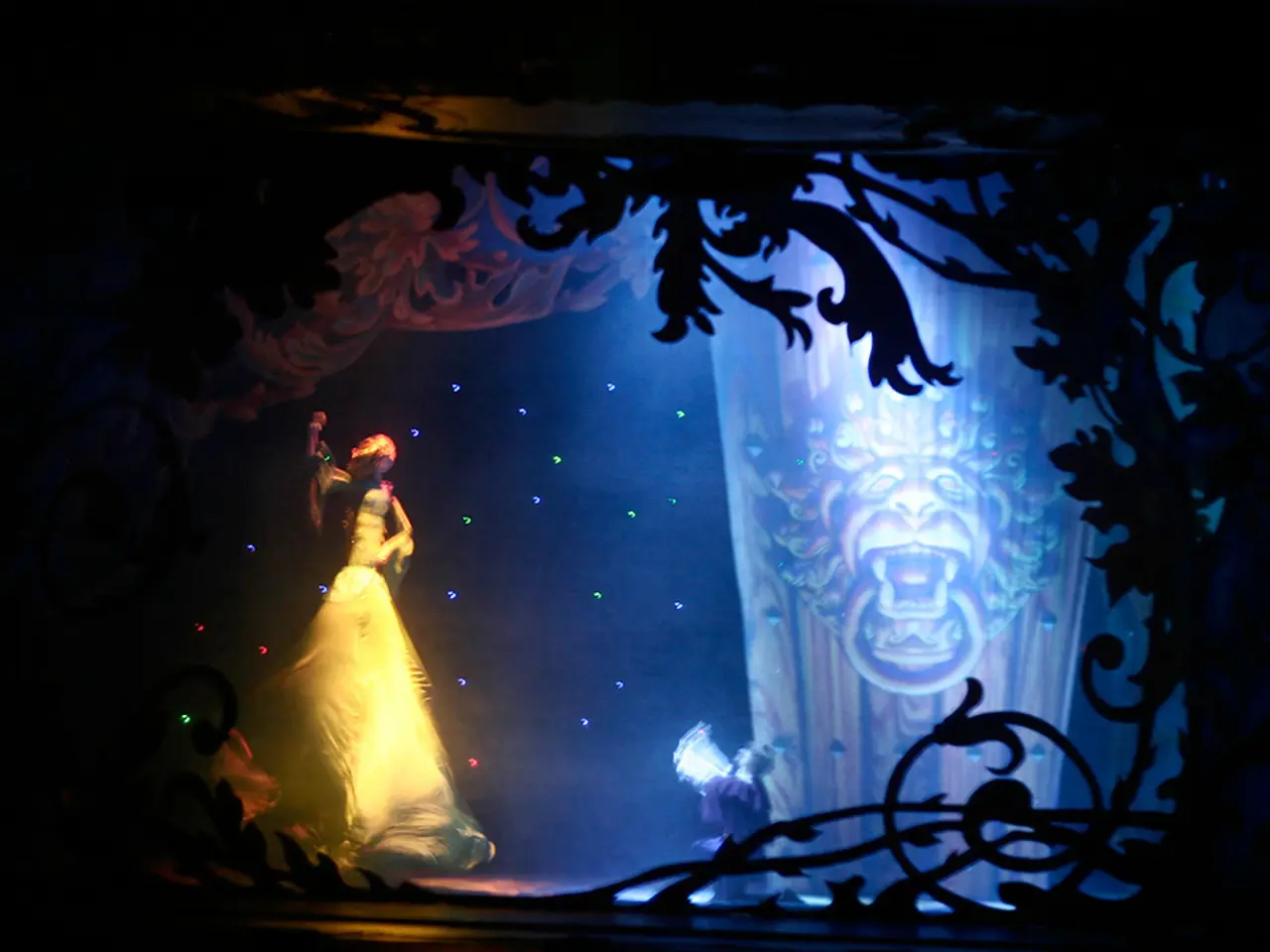Activist and Model Quannah ChasingHorse's Dual Identity - A Deep Dive into the Life of the Native Advocate and Fashion Industry Phenomenon
Quannah ChasingHorse, a member of the Hän Gwich'in and Sičangu/Oglala tribes, is making waves in the fashion industry by championing Indigenous culture, sustainable fashion, and inclusivity.
Growing up in Alaska, ChasingHorse lived out in the bush in a log cabin, where she learned to dog mush, hunt, and fish due to limited resources. Her experiences shaped her connection to the land and her Native heritage. This connection is reflected in her tattoos, a form of self-expression and celebration of her heritage.
At the age of 14, ChasingHorse became the first and youngest girl in her tribe to receive a tattoo, a practice that is among the most sacred in her culture and identifies who she is. These tattoos have faced discrimination and ignorance in her modeling career, but ChasingHorse sees them as a source of pride and a way to reclaim her cultural identity.
ChasingHorse has used her platform to advocate for Native visibility, including traditional face tattoos and promoting Indigenous designers. She has branched out into film, narrating the documentary "Bad River" and starring in her own documentary short, "Walking Two Worlds."
Beyond representation, ChasingHorse links fashion to environmental activism, advocating for sustainable practices that honor the land and Indigenous ways of living. Her climate activism is inseparable from her fashion advocacy, advancing a vision where beauty standards support ecological responsibility and Indigenous sovereignty.
ChasingHorse's message is to reclaim power and be unapologetic and authentic in who she is, including her tattoos. She wore a black parka with a furry hood and a skirt decorated with images of Native children for a cover shoot for "National Geographic," embodying her message of celebrating Indigenous culture.
Despite the challenges she has faced, ChasingHorse continues to use her voice to challenge mainstream fashion’s narrow definitions and promote Native voices as central to contemporary aesthetics and sustainability. She recently spoke with Anne Strainchamps on "To The Best Of Our Knowledge" about Native land rights, modeling, and walking two worlds.
Sources: [1] https://www.vogue.com/article/quannah-chasinghorse-indigenous-fashion-advocate [2] https://www.nytimes.com/2021/07/28/arts/television/quannah-chasinghorse-walking-two-worlds.html [3] https://www.indianz.com/news/2021/06/24/indigenous-fashion-gala-celebrates-native-designers-in-nyc.asp [4] https://www.nationalgeographic.com/culture/article/quannah-chasinghorse-native-american-tattoos [5] https://www.theguardian.com/fashion/2021/may/20/quannah-chasinghorse-native-american-model-fashion-activism-climate-change
- Quannah ChasingHorse's passion for Indigenous culture, sustained by her upbringing in Alaska, extends beyond fashion, as she also advocates for environmental science and climate change awareness.
- In her quest for personal growth, ChasingHorse has leveraged her educational journey in environmental-science to fuel her activism, championing the importance of sustainable practices in the fashion industry.
- Besides her successful career development in the fashion industry, ChasingHorse also showcases her artistic flair in sports, often donning basketball jerseys emblazoned with Native designs during her games.
- As part of her dedication to learning and self-development, ChasingHorse has conducted extensive research in space-and-astronomy, incorporating astronomical symbols into some of her intricate tattoos.
- Recognizing the interconnectedness between fashion, lifestyle, and environmental issues, ChasingHorse is a proponent of education-and-self-development, teaching her followers about the impact of their fashion choices on the environment and how they can make conscious decisions for a better future.
- Seeking to uplift the entire Native community, ChasingHorse's future career-development plans encompass creating a fashion-and-beauty line that promotes the values of inclusivity, sustainability, and empowers Native artists, providing them with a platform to showcase their work.




